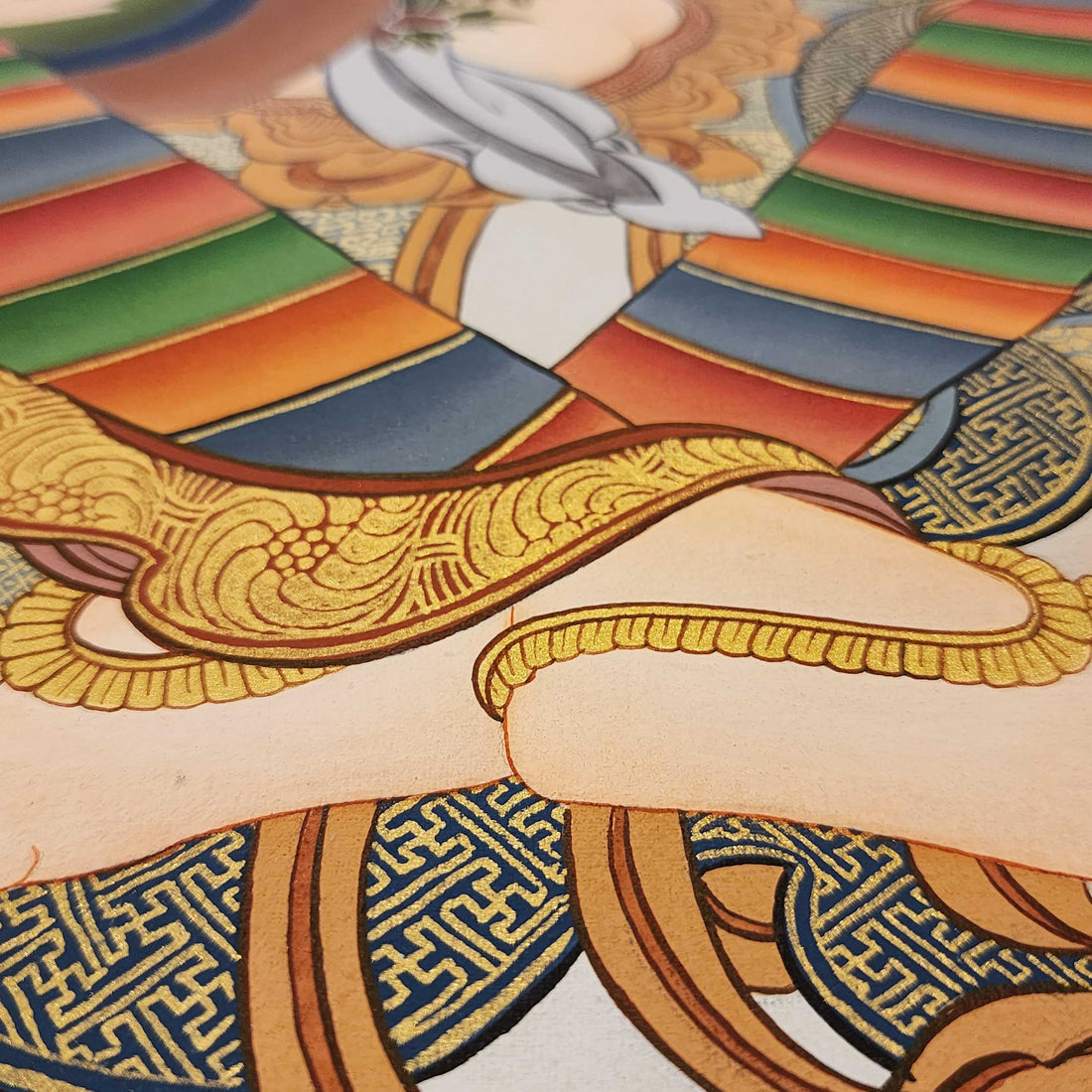
The Step-by-Step Process of Creating a Hand-Painted Tibetan Thangka
Compartir
Introduction
A hand-painted Tibetan Thangka is more than just a work of art. It is a spiritual creation that can take weeks or even months to complete. From preparing the canvas to the final blessings, each step follows ancient traditions that have been preserved for centuries. Understanding this process deepens appreciation for these sacred paintings and highlights why authentic Thangkas hold such value.
Step 1: Preparing the Canvas
Thangka artists begin with a piece of cotton or silk, stretching it tightly over a wooden frame. A mixture of chalk powder and animal glue is applied to the surface to create a smooth, durable painting ground. The canvas is then sanded until perfectly even.
Step 2: Drawing the Sacred Outline
Using precise grids and measurements from ancient scriptures, the artist sketches the main image. These proportions are not artistic choices. They are symbolic, representing universal balance and the enlightened form.
Step 3: Applying Base Colors
The first layers of color are painted using natural mineral pigments, gold dust, and vegetable dyes. These colors are carefully chosen for their spiritual meaning. For example, blue for compassion, red for transformation, and white for purity.
Step 4: Adding Fine Details
This is the most time-consuming stage. Artists use ultra-fine brushes to paint facial expressions, jewelry, clothing patterns, and sacred symbols. Every detail has meaning, from the curve of a lotus petal to the gaze of a deity.
Step 5: Gilding with Gold
Real gold leaf or powdered gold is often applied to highlight halos, ornaments, and sacred symbols. This adds both visual brilliance and spiritual power to the Thangka.
Step 6: Final Blessings
Once the painting is complete, it is traditionally taken to a monastery or lama for consecration. The monk may inscribe mantras on the back and perform rituals to bless the Thangka, transforming it into a sacred object.
Step 7: Mounting in Silk Brocade
Authentic Thangkas are often mounted with colorful silk brocade borders, allowing them to be rolled for travel and displayed during rituals or meditation.
Conclusion
Every hand-painted Thangka is the result of devotion, precision, and ancient wisdom. By understanding the process, you can better appreciate the artistry and spiritual significance behind each piece and see why these works are worth treasuring.
